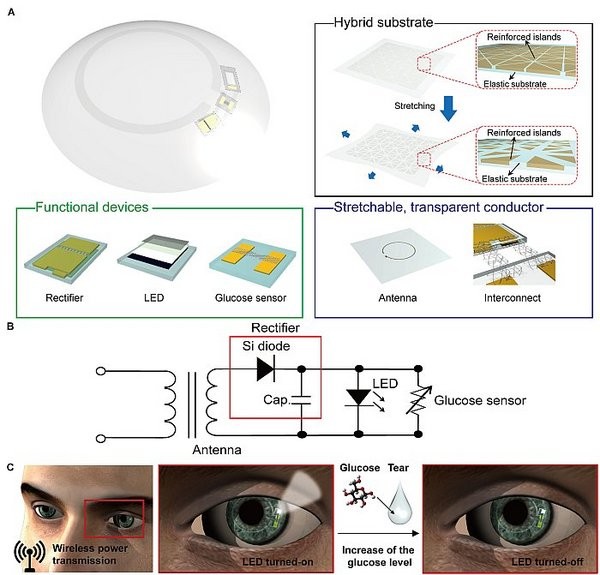When it comes to the means of real-time blood glucose monitoring, diabetes patients have very limited choices.
Medical researchers have been searching for a non-invasive alternative method for self detection anytime and anywhere, at least inventing an all-weather sensor that can be worn subcutaneously. Now a South Korean research and development team has found a solution: use contact lenses to monitor the glucose content in tears.
This is not the first time anyone has thought of contact lenses. As early as 2014, Google announced the development of a contact lens that can measure blood sugar, but it has not yet been completed - if it is still under development.
Jihun Park, a materials scientist at the National Institute of Science and Technology in Ulsan, South Korea, and his colleagues have conducted prototype experiments and tests on rabbits, and reported that it does not cause adverse reactions.
And it is soft and elastic, with only a few rigid components, satisfying the wearer as comfortably as possible. It contains neither fragile nor heavy ingredients, and will not obstruct vision or harm the eyes.
The components inside the contact lens are arranged around the edges, away from the pupils. They consist of a glucose sensor, a small green LED facing outward, an antenna, and a rectifier, all connected by ultra-fine flexible wires.

Park et al, Science Advances
The antenna and rectifier receive RF signals from the transmitter and convert them into electrical energy to meet the weak power needs of the glucose monitor and LED.
When glucose levels soar to a high point, the outward facing LED will be turned off, so it will not interfere with normal vision.
This also means that the wearer has to check their blood sugar level through a mirror, but it is indeed effective, even if the glucose concentration in tears is 5-10 times lower than the blood sugar concentration.
It may sound bulky, but the components inside the lens - even rigid components such as the silicon gasket in a glucose monitor - are only one percent of the thickness of the lens itself.
The team has not yet conducted human testing, but they have already conducted tests on rabbits. The report states that rabbits have no adverse reactions to lenses.
This is particularly important because glucose monitors use glucose oxidase to bind to sugars - a byproduct of this process is hydrogen peroxide, which may damage or irritate the eyes.
It not only has good safety, but the research team has found that the lenses accurately track the blood sugar levels of rabbits.
Before humans can use it, there may still be a way to go, but now at least it indicates that this path is feasible, and the future is only a matter of time.
In vivo testing using live rabbits... provides a substantial safety commitment for non-invasive hygiene monitoring experiments using future intelligent contact lenses for human eyes and tears, 'they wrote in the report.
The study has been published in Science Advances.